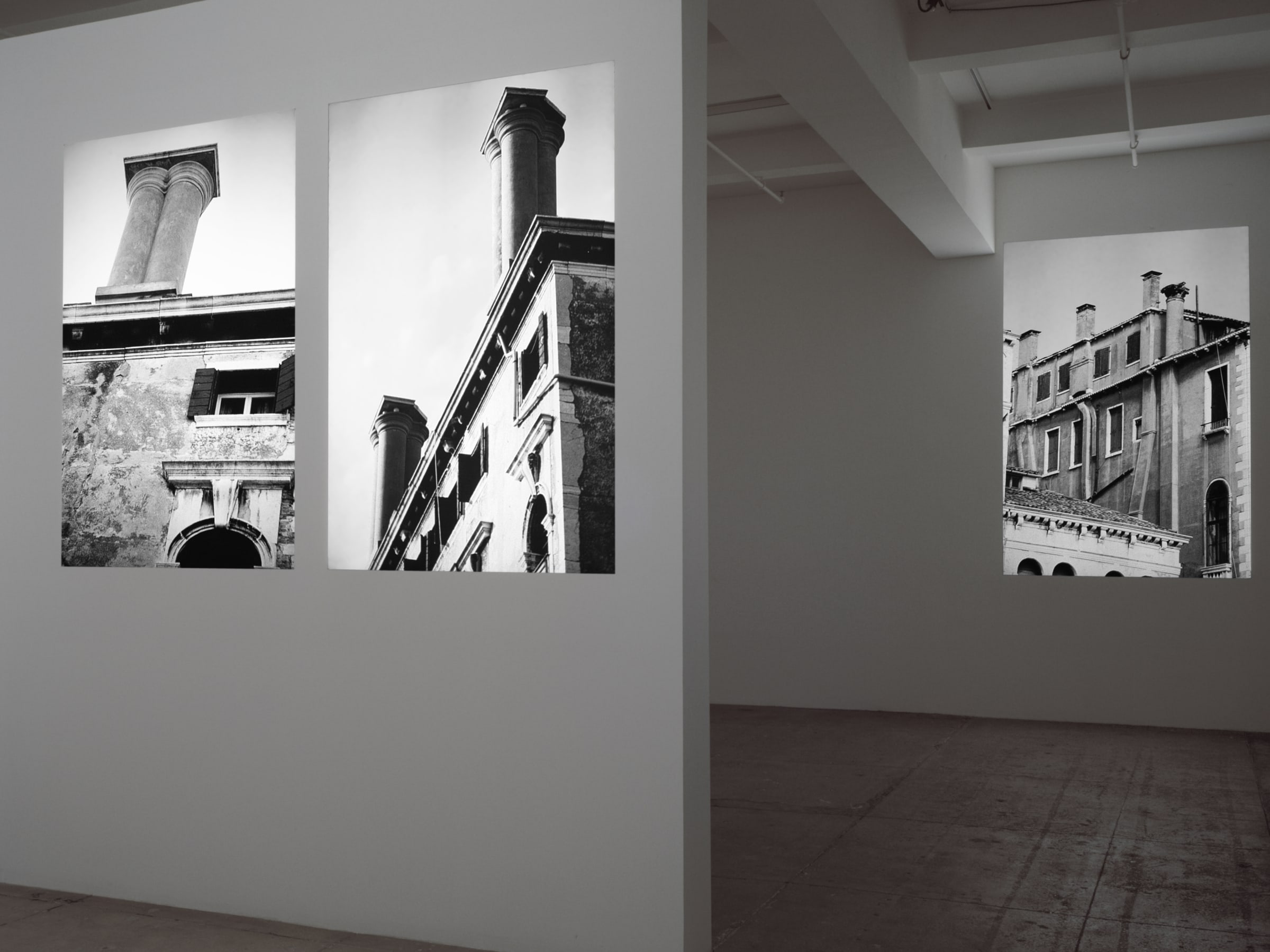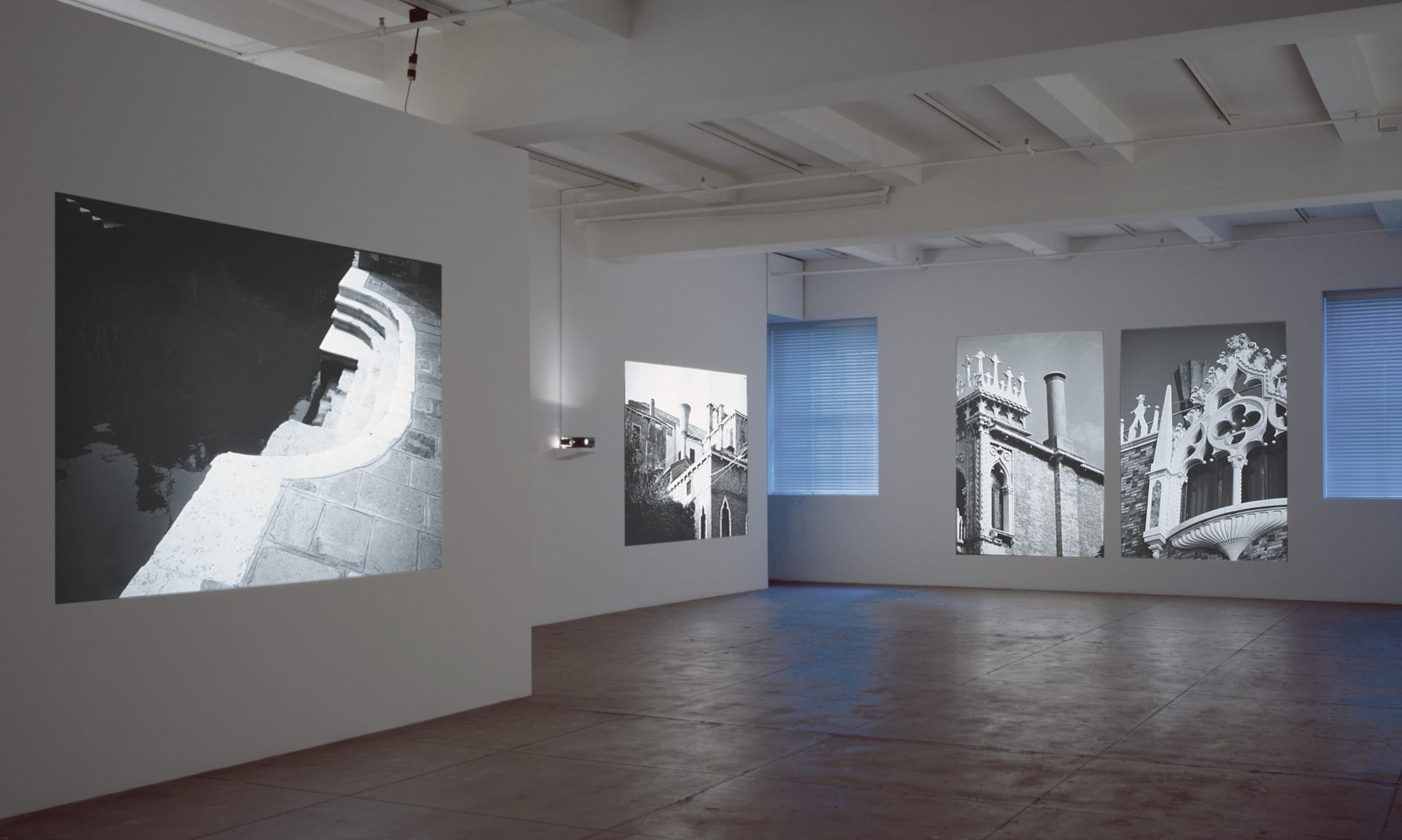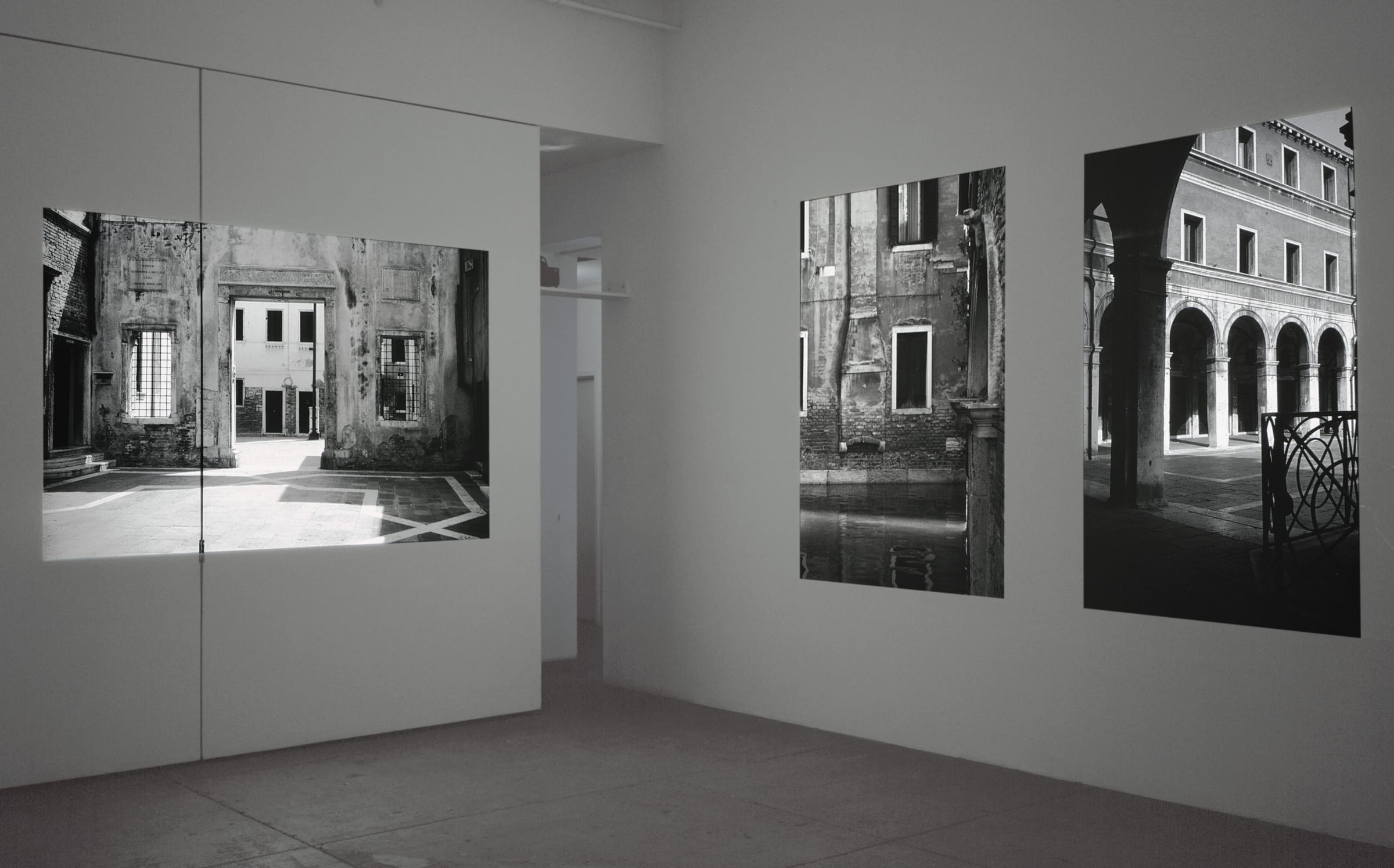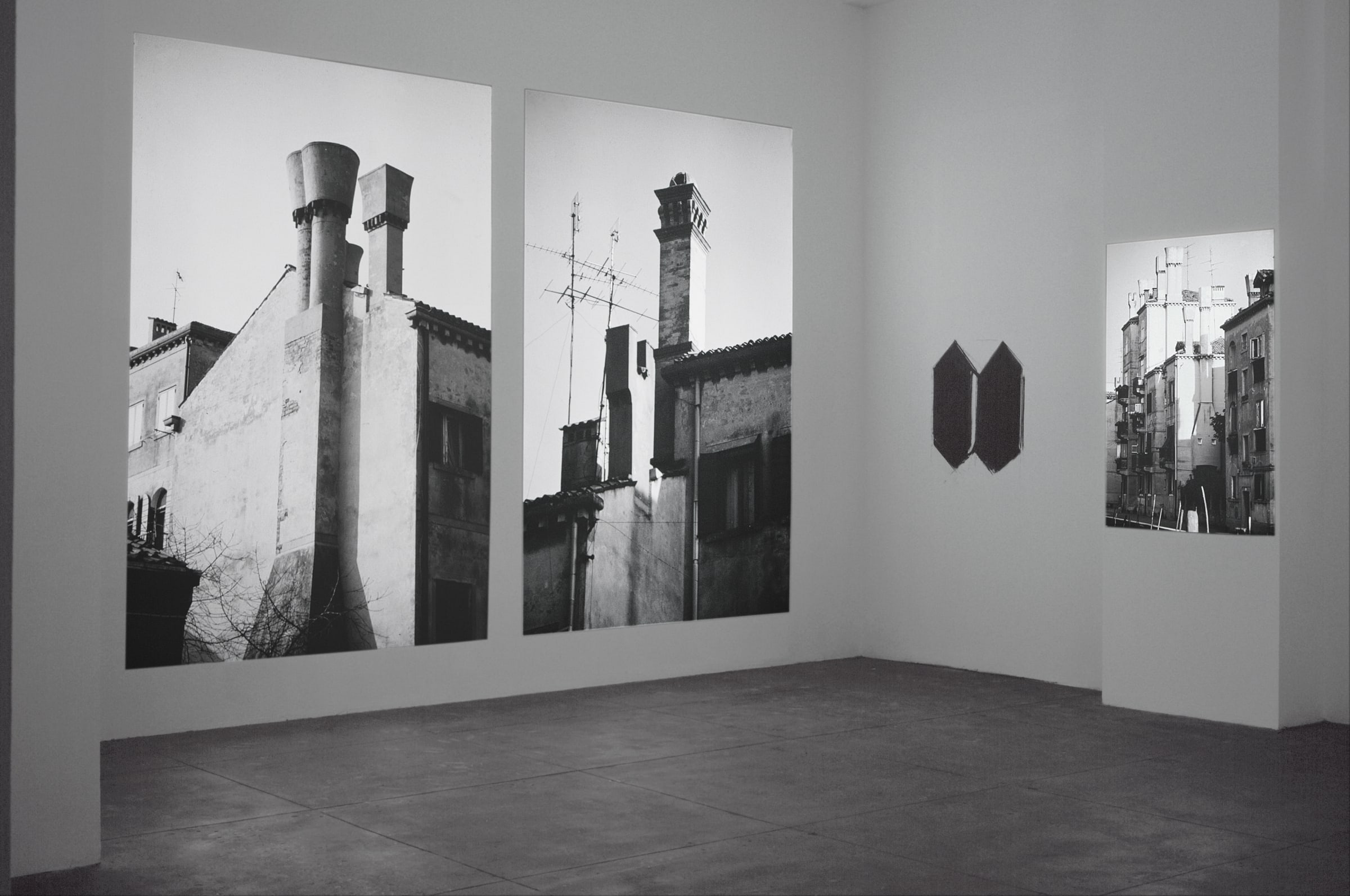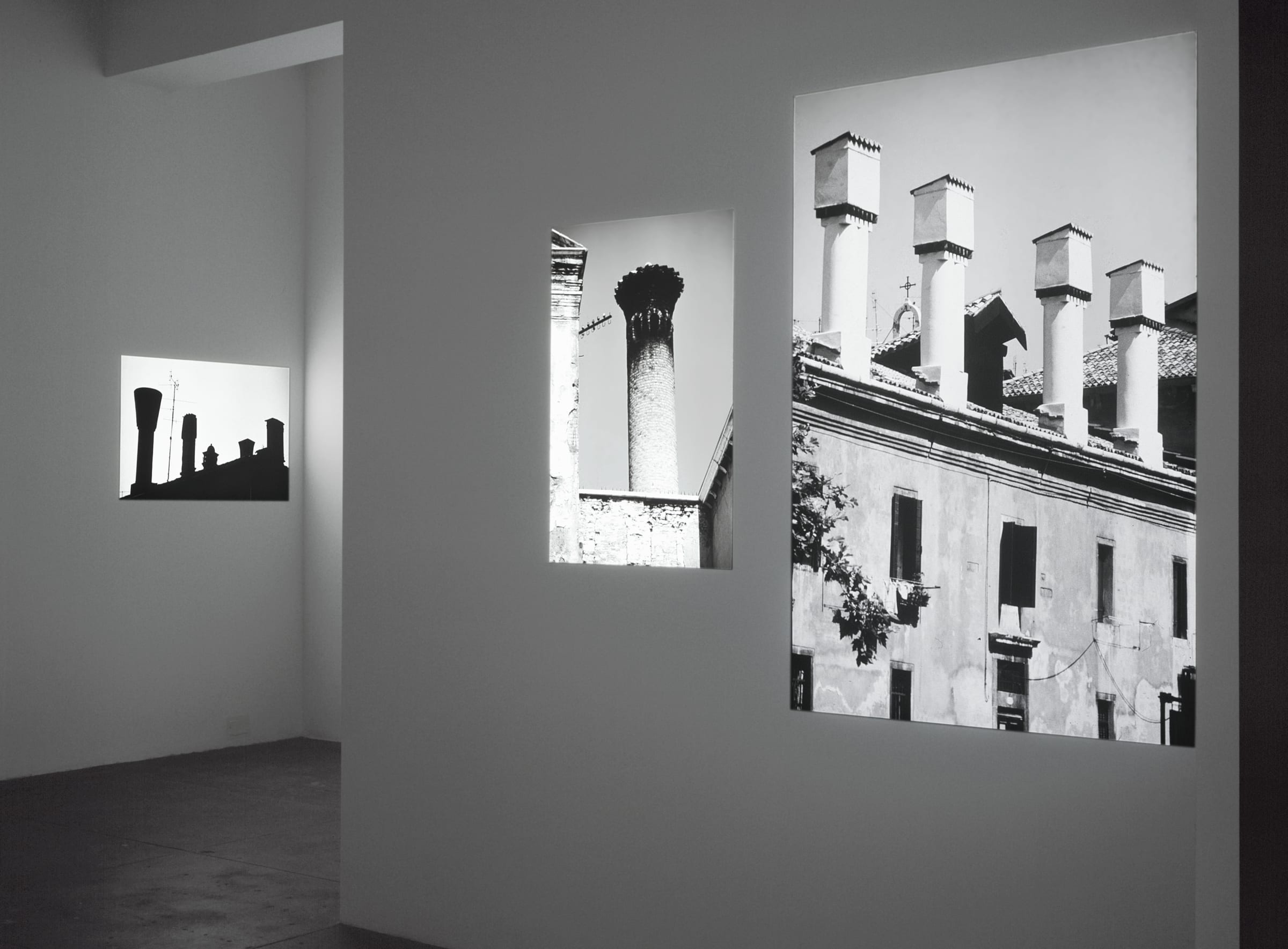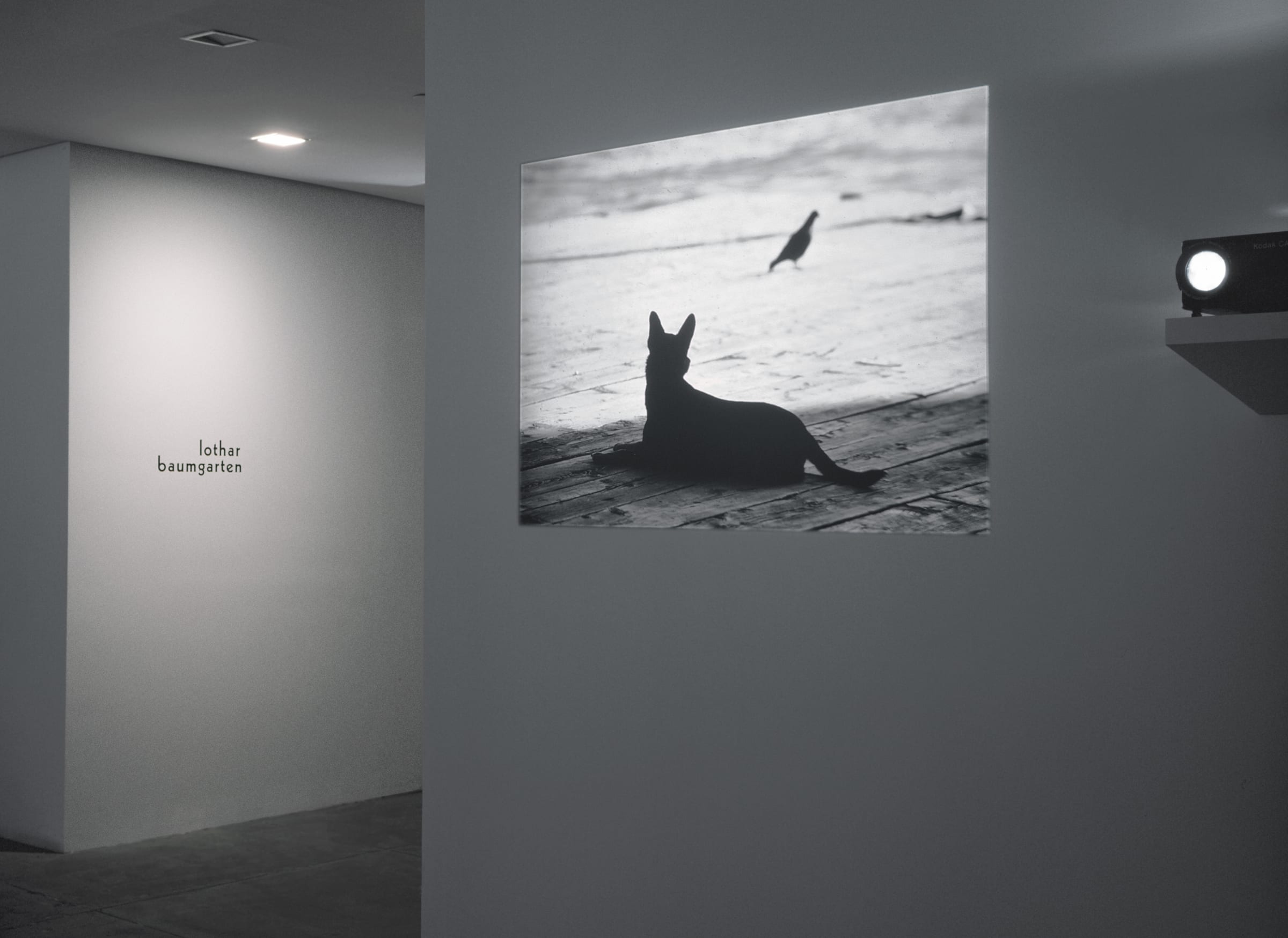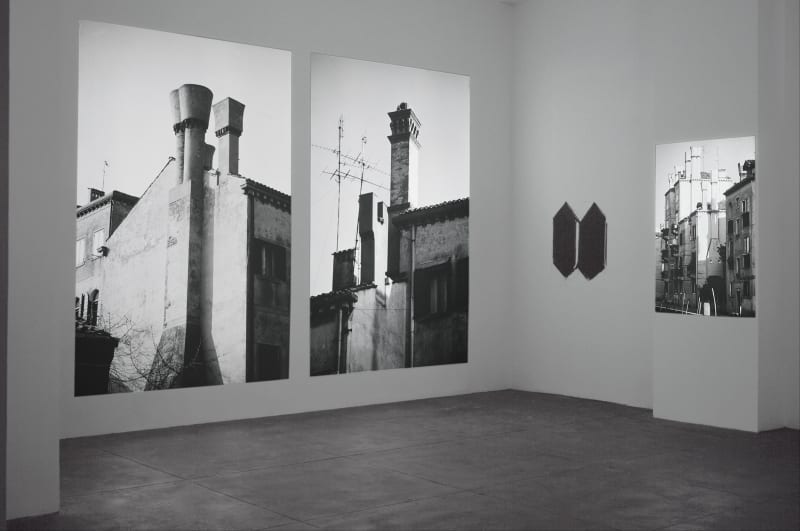Overview
Marian Goodman Gallery is delighted to announce the space-related presentation, How to See Venice by Lothar Baumgarten. How To See Venice will open to the public on Wednesday, May 2nd, and will be on view through Friday, June 16th. This will be the first solo exhibition in New York since his one-man show and site-specific work AMERICA Invention was seen at the Guggenheim Museum in 1993.
How to See Venice was photographed in 1983-84 and was created for the Mies van der Rohe building Haus Esters in Krefeld, Germany where it was shown in 1992. This is the first time that this architectural-related projection piece will be presented in the United States.
As the artist himself writes, “My work is not a question of strategy or mode of opinion. Rather it is based on principles, guided by intuition. Measurement and proportion are the instruments of my thought, a grammar which reflects elementary spatial relationships and a rational sense of timing and emphasis are fundamental to my artistic practice. It is about the sensual qualities embedded in the body of space, its materialization and form. My work is not about installation; it is art that does not ignore its architectural context. The work takes material form by integrating given structures into a complex whole and by creating a canon of references among individual, site specific elements. This dynamic is a dialectic in which a critical discourse with contemporary culture unfolds within an architectural framework. The content becomes the form. My critical approach does not intend to offer autobiographical solutions to universal problems. I believe art should encourage us to question the status quo and the structures that allow it to persist.”
Lothar Baumgarten
How to See Venice
Opening reception: May 2, 6 – 8 pm
Opening, Wednesday, May 2, 6 – 8 pm Marian Goodman Gallery is delighted to announce the space-related presentation, How to See Venice by Lothar Baumgarten. How To See Venice will open to the public on Wednesday, May 2nd, and will be on view through Friday, June 16th. This will be the first solo exhibition in New York since his one-man show and site-specific work AMERICA Invention was seen at the Guggenheim Museum in 1993.
How to See Venice was photographed in 1983-84 and was created for the Mies van der Rohe building Haus Esters in Krefeld, Germany where it was shown in 1992. This is the first time that this architectural-related projection piece will be presented in the United States.
As the artist himself writes, “My work is not a question of strategy or mode of opinion. Rather it is based on principles, guided by intuition. Measurement and proportion are the instruments of my thought, a grammar which reflects elementary spatial relationships and a rational sense of timing and emphasis are fundamental to my artistic practice. It is about the sensual qualities embedded in the body of space, its materialization and form. My work is not about installation; it is art that does not ignore its architectural context. The work takes material form by integrating given structures into a complex whole and by creating a canon of references among individual, site specific elements. This dynamic is a dialectic in which a critical discourse with contemporary culture unfolds within an architectural framework. The content becomes the form. My critical approach does not intend to offer autobiographical solutions to universal problems. I believe art should encourage us to question the status quo and the structures that allow it to persist.”
Lothar Baumgarten has exhibited widely internationally and nationally and has been the recipient of numerous awards. In 1997 he was awarded the Lichtwark Prize, the City of Hamburg, Germany; in 1984 he won The Golden Lion, First Prize of the 41st Venice Biennial, Venice, Italy; and in 1976 and 1974, the Prize of the State of Nordrhein-Westfalen, and the Prize of the City of Düsseldorf, Germany, respectively.
He will have five solo museum exhibitions in Europe this year: in Portugal at The Serralves Museum of Contemporary Art, Porto, opening April 7th; in Germany at the Museum of Modern Art, Frankfurt, where Carbon (1987-90) is currently on view; and forthcoming at the HamburgerKunsthalle, Hamburg; the Lenbachhaus, Munich; as well as in Italy at Querini Stampalia, as part of the 49th Biennale of Venice. Other exhibitions and venues have included: Terra Incognita at the Kunsthaus in Zurich in 1998; the Museum Kurhaus Kleve, Kleve, Germany in 1997; Conservatory (1973-74) at the Royal Botanic Garden in Edinburgh in 1995; Silencium at Transmission Gallery, Glasgow in 1994; Eklipse (1992-93) at Portikus, Frankfurt in 1993; Tierra Firme (1977-85) at Instituto Valenciano de Arte Moderno, Valencia in 1992; Baltic Window (1990-91) at the Museum of Contemporary Art, Helsinki in 1991; El Dorado (1977) at the Kunsthalle, Bern; Métro Nome (1985-87) at the Musée des Arts Africains et Oceaniens, Paris, both in 1987; and Accès aux Quais /Tableaux Parisiens at the ARC/Musée d’Art Moderne de la Ville de Paris, Paris in 1986.
In the U.S. a major solo exhibition titled AMERICA Invention (1985) was held at The Solomon R. Guggenheim Museum, New York in 1993. That same year, Carbon was exhibited at The Renaissance Society, Chicago. In 1990 the larger exhibition took place at the Museum of Contemporary Art, Los Angeles. In 1987 the Carnegie Museum of Art, Pittsburgh, presented Vacuum; and in 1985 a one-man show was organized at The Institute of Contemporary Art, Boston. Important group exhibitions include: the Trienale, Yokohama, Japan, coming up in September 2001; Seeing Time: Selections from the Pamela and Richard Kramlich Collection of Media Art, at the San Francisco Museum of Modern Art; The Museum as Muse, The Museum of Modern Art, New York; 1965-1975: Reconsidering the Object of Art, at the Museum of Contemporary Art, Los Angeles; The 1991 Carnegie International, the Carnegie Museum of Art, Pittsburgh; Skulptur Projekte Münster, at the Westfälisches Landesmuseum, Münster; and Von hier aus, at the Messehallen in Düsseldorf. His work has been included in four Documenta exhibitions, Documenta 10, 9, 7, and 5 in Kassel, Germany; and in 1984 he represented his country in the German Pavilion at the 41st Venice Biennale, and prior to that, in 1978, at the 38th Venice Biennale. He has completed several commissions for public sites, including the design for the complete work which structures the architectural concept of the New Presidential Headquarters for The Federal Republic of Germany, Berlin (made between 1996 and 1998), as well as the garden Theatrum Botanicum (1993-94), created for the Fondation Cartier, Paris (between 1994 and 1996).
A catalogue which was published on the occasion of the exhibition Wie Venedig sehen in 1992-93 at the Museum Haus Esters, Krefeld, Germany includes images from the current exhibition, How to See Venice, and is available.
